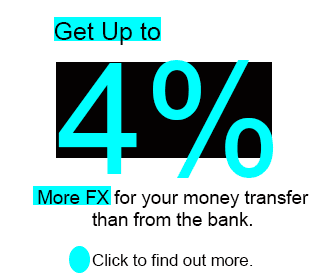Australian Dollar Outlook Bolstered by Strong Job Report
- Written by: Gary Howes
-

Image Patrick Nouhailler, License: CC BY-SA 2.0. Source.
The Australian Dollar outlook was bolstered by a firm domestic labour report that will ensure the Reserve Bank of Australia (RBA) is one of the last major central banks to cut interest rates.
"Australia's May labour force report was good and will keep the RBA cautious from easing too early," says Elias Haddad, Senior Markets Strategist at Brown Brothers Harriman.
Australian employment increased 39.7k in May, said the ABS (consensus: 30k, prior 37.4k), driven by full-time jobs.
The unemployment rate dipped to 4.0% on an unchanged participation rate of 66.8% and remained at the lower end of the RBA’s estimated full employment range of 4.0-5.75%.
Haddad says he looks for the Aussie Dollar to edge higher versus the Canadian Dollar because, unlike the Bank of Canada, the RBA is in no rush to cut rates.
"An unambiguously strong jobs report has further strengthened our conviction in higher-for-longer trades," says Adarsh Sinha, a strategist at Bank of America. "AU jobs growth was above expectations and skewed heavily to full-time work as unemployment fell. We see this as a good entry point for adding higher-for-longer trades, including our recommendation to buy carry-rich AUD/CHF."
This acknowledges a key driver of FX valuations: central bank policy, whereby those that cut sooner and faster will weaken their currencies (for example, the Swiss National Bank). The Australian Dollar enjoyed a period of outperformance in May thanks to interest rate expectations going its way, and these job numbers suggest selling the currency can be risky.
The job report revealed that employment growth remained strong, coming in line with the average for job gains so far this year of 40.7k/month. This makes for a step up from last year's average of 31.9k and highlights a strong economy that will command solid wage growth that will, in turn, keep domestic inflation elevated.
"It has made Australian rate market participants less confident that the RBA will cut rates this year," says Lee Hardman, Senior Currency Analyst at MUFG Bank Ltd. "The Australian dollar has derived more support in recent months from the hawkish repricing of RBA rate cut expectations alongside the broad-based rebound in high beta G10 currencies encouraged by stronger global growth at the start of this year."

According to market pricing, the RBA looks unlikely to cut interest rates until 2025, making the Australian Dollar an attractive prospect against those currencies where interest rate cuts have started and will continue.
But, the supportive domestic backdrop could be overshadowed by negative developments on the global picture; after all, the Australian Dollar is highly sensitive to external developments.
"One downside risk for the Australian dollar through the rest of this year is the potential for trade tensions between China and other major economies to intensify ahead of the US election in November. A development that could hurt investor sentiment towards the Aussie as well as Asian currencies," says Hardman.
The EU on Wednesday said it plans to impose new tariffs on imports of Chinese electric vehicles into the trading bloc, potentially triggering a trade war.
This follows a similar move announced by the U.S., and analysts say to expect retaliation from China.
The developments underscore the steady and persistent move away from globalisation since the Trump era, and long-term, this is not supportive of currencies that rely on global growth for support, such as the Aussie.










